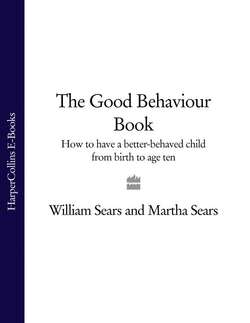Читать книгу The Good Behaviour Book: How to have a better-behaved child from birth to age ten - Martha Sears - Страница 22
chapter 2 birth to one year: getting connected
ОглавлениеWhy are some children easier to discipline? It took us more than twenty years of parent and baby watching to answer this question. Our conclusion is: the deeper the parent-child connection, the easier discipline will be.
To help you appreciate the relationship between connecting to your child and disciplining your child, in this chapter we will share with you our observations of thousands of parent-child pairs, our experience in connecting with our own eight children, and what other researchers have observed about the relationship between parent-child attachment and discipline.
What we observed. We noticed three features of connected kids that made them easier to discipline:
• They want to please.
• They are willing to obey.
• They are more self-controlled.
These are the kids you like to be around.
We also noticed these features of connected parents:
• They respond sensitively to their child’s needs.
• They respond appropriately, neither giving too much nor too little.
• They know their child. They are observant of age- and stage-appropriate behaviours.
• They are in charge of their child in a guiding, not controlling, way.
What others observed. In addition to our own observations, we read the most credible research that attempted to answer the age-old question, What can parents do that most affects the way their children turn out? These are known as attachment studies. Attachment researchers use the term “securely” attached children (we call them connected kids) or “insecurely” or “anxiously” attached children (we call them unconnected kids). The striking conclusion that we can make from these studies is that, in addition to our genetic wiring, how we become who we are is rooted in the parent-child connection in the first few years of life. Attachment researchers found that connected kids shine in nearly every area of competence and behaviour. The summary of their observations is shown in the chart on.
Modern research is finally concluding what savvy mothers have always known: a healthy attachment in infancy is likely to turn out a healthier adult. How a mother and infant spend the first year together makes a difference, probably for the rest of their lives. The basis for discipline at all ages is being connected to your child. The earlier you get connected, the more successful your discipline will be. To guide your child you have to know your child, be able to read your child’s body language, and give age-appropriate responses. For your child to receive your discipline, your child needs to be able to read and trust you. This mutual connection allows discipline to flow naturally from you to your child, and prepares your child to want your guidance. As rational as this sounds, there are many families where this doesn’t happen. Our purpose in this chapter is to show you how to let this connection happen, right from the very beginning.
